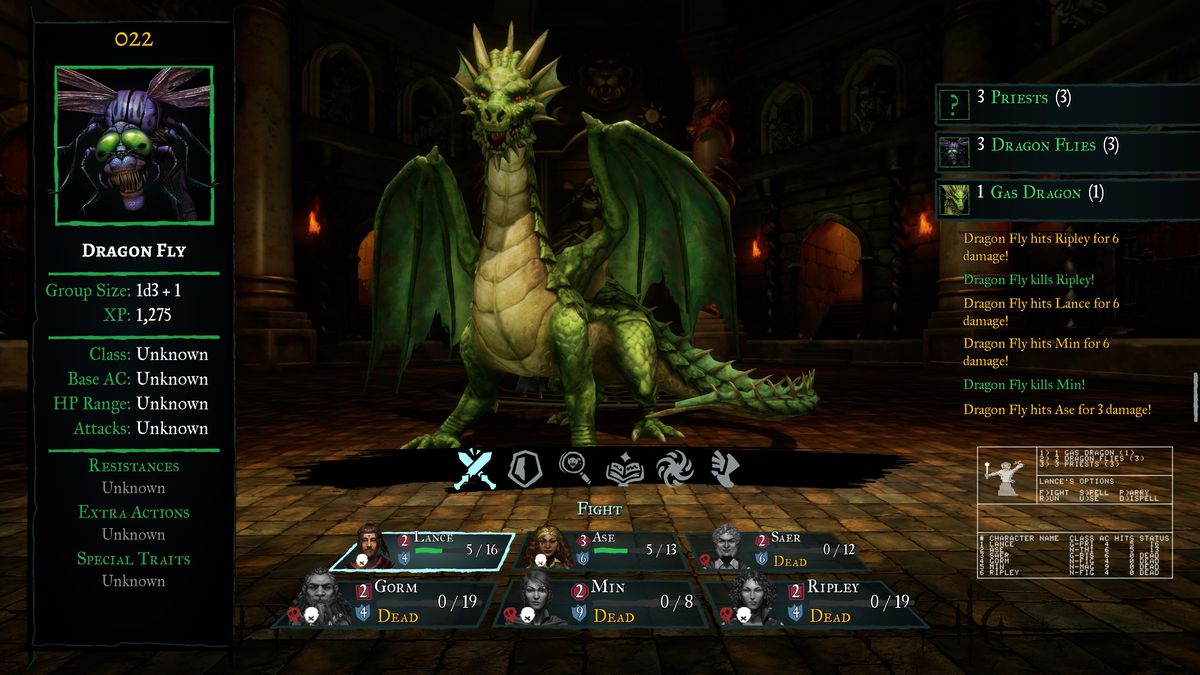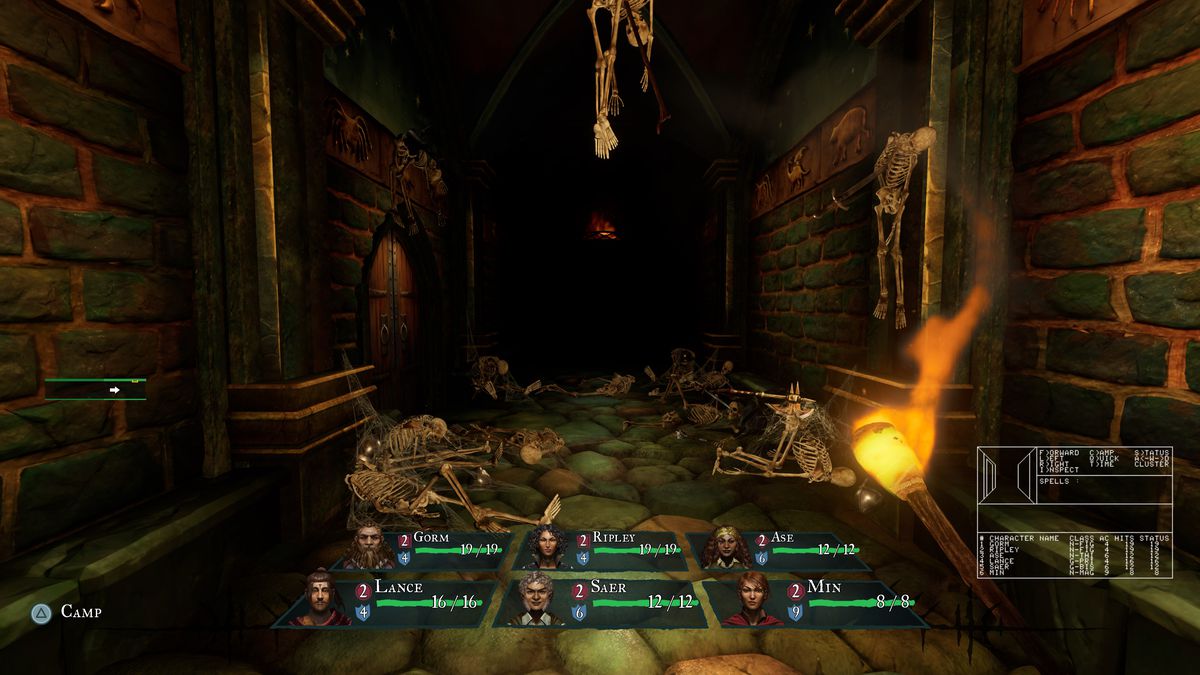When game director Hidetaka Miyazaki tried to explain his then-new game Demon’s Souls to the masses, he chose another game as its reference point: the classic, Dungeons & Dragons-inspired role-playing game Wizardry.
FromSoftware wanted to “make the fun and charms of a classic RPG interesting all over again with the latest technology at hand,” Miyazaki told Famitsu in 2008. “Having long weapons bump into walls, lighting the area in real time with the torch in your hand […] taking the things you did through menus in Wizardry and letting you carry them out in real life.”
Miyazaki wasn’t the only one thinking this. Wizardry — alongside another RPG powerhouse of the early ’80s, Ultima — has been cited by dozens of Japanese game developers as a major influence on their defining work. That includes Final Fantasy creator Hironobu Sakaguchi, Dragon Quest creator Yuji Horii, and Secret of Mana game director Koichi Ishii. Wizardry and Ultima defined the formula of menu-driven, turn-based RPGs for decades to come, inspiring developers to adhere to its template and to break free from it.
Thanks to the newly released Wizardry: Proving Grounds of the Mad Overlord, it’s now very easy to experience what dazzled dungeon-crawling fans of the early ’80s. Wizardry: Proving Grounds of the Mad Overlord is a modernized overhaul of the original Apple II game, with gorgeous new 3D visuals and dozens of quality-of-life improvements that make Wizardry more easily playable — but by no means easy — in 2024.

Image: Digital Eclipse/Sir-Tech
The new Wizardry serves as a streamlined entry point into a game designed for a very different kind of player, someone who would bash their head against the RPG’s unexplained rules and rudimentary graphics to savor its authentic D&D-style, party-based gameplay. The new version is lavishly repainted with graphics that ooze the atmosphere of classic tabletop RPG book art and vintage Wizardry magazine covers. It also makes the stats and percentages more visible, explaining why you might have failed an encounter with a party of angry kobold skeletons, slimes, or bushwackers. There’s even a rich bestiary that provides new lore entries on the game’s 101 monsters and other menaces.
Running underneath the hood of the Wizardry remaster is the game’s Apple II source code, restored by developer Digital Eclipse from the original Pascal programming language. All the dice rolls and random encounters defined by classic Wizardry’s rules are present in the new version.
Alongside that reverent attention to the original game rules, Digital Eclipse has inserted a long list of quality-of-life features into its new Wizardry. You can easily put together a party of adventurers with the click of a button — or you can craft your team of fighters, thieves, priests, and mages completely from scratch. There’s a lovely graphical interface that lets you easily jump from the inn, where your characters rest and level up, to the shop, where there’s actual useful information about the weapons and armor you can buy, to the maze, where you’ll do your perilous, first-person dungeon crawling.

Image: Digital Eclipse/Sir-Tech
Wizardry: Proving Grounds of the Mad Overlord does a wonderful job of letting players have it both ways; Digital Eclipse lets you choose which streamlining features you want to keep and which you don’t. The remaster even provides the option of different maze layouts, letting you choose between either the PC version or the 8-bit console versions. (You can also opt to see the original Apple II visual running in the corner of the screen, so you can regularly marvel at 40 years of graphical evolution.)
During my first playthrough of the remaster, I defaulted to the most streamlined version of Wizardry and soon found that those changes definitely do not make the game a coddling experience. Wizardry remains immensely difficult, even in its new form. I frequently lost members of my party after overextending them by pushing us all further and further into the maze. But the mysteries and chance encounters of Wizardry beckon you to do that — to explore, die, and try again. And maybe recover the corpses of the previous team of unlucky adventurers that you sent to their deaths in the maze earlier in the game.
Digital Eclipse’s Wizardry: Proving Grounds of the Mad Overlord is worth playing, particularly if you’re a fan of classic Final Fantasy or Dragon Quest games and want to learn more about their inspiration. As part of Digital Eclipse’s growing library of beautifully restored historical games (Atari 50, The Making of Karateka, Llamasoft: The Jeff Minter Story), it’s a new way to experience a classic game in a form that was clearly developed with reverence for the source material.
[embedded content]
Wizardry: Proving Grounds of the Mad Overlord is available now for Nintendo Switch, PlayStation 4, PlayStation 5, Windows PC, Xbox One, and Xbox Series X. The game was played on PC and Steam Deck using a pre-release download code provided by Digital Eclipse. Vox Media has affiliate partnerships. These do not influence editorial content, though Vox Media may earn commissions for products purchased via affiliate links. You can find additional information about Polygon’s ethics policy here.
- SEO Powered Content & PR Distribution. Get Amplified Today.
- PlatoData.Network Vertical Generative Ai. Empower Yourself. Access Here.
- PlatoAiStream. Web3 Intelligence. Knowledge Amplified. Access Here.
- PlatoESG. Carbon, CleanTech, Energy, Environment, Solar, Waste Management. Access Here.
- PlatoHealth. Biotech and Clinical Trials Intelligence. Access Here.
- Source: https://www.polygon.com/24162697/wizardry-remaster-final-fantasy-dragon-quest-demons-souls



